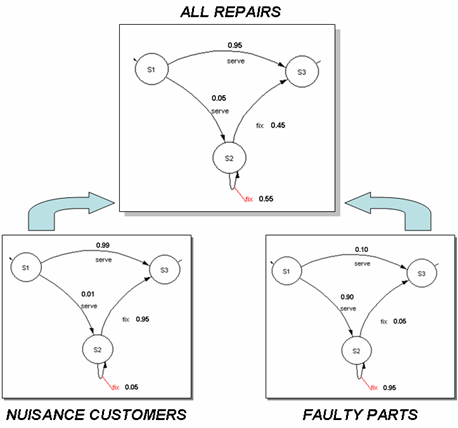

Business process discovery (BPD) related to business process management and process mining is a set of techniques that manually or automatically construct a representation of an organisations' current business processes and their major process variations. These techniques use data recorded in the existing organisational methods of work, documentations, and technology systems that run business processes within an organisation. The type of data required for process discovery is called an event log. Any record of data that contains the case id (a unique identifier that is helpful in grouping activities belonging to the same case), activity name (description of the activity taking place), and timestamp. Such a record qualifies for an event log and can be used to discover the underlying process model. The event log can contain additional information related to the process, such as the resources executing the activity, the type or nature of the events, or any other relevant details. Process discovery aims to obtain a process model that describes the event log as closely as possible. The process model acts as a graphical representation of the process (Petri nets, BPMN, activity diagrams, state diagrams, etc.). The event logs used for discovery could contain noise, irregular information, and inconsistent/incorrect timestamps. Process discovery is challenging due to such noisy event logs and because the event log contains only a part of the actual process hidden behind the system. The discovery algorithms should solely depend on a small percentage of data provided by the event logs to develop the closest possible model to the actual behaviour.
Various algorithms have been developed over the years for the discovering the process model using an event log:
Business Process Discovery complements and builds upon the work in many other fields.
Resources are allocated based on the process category with resources first dedicated to red processes, then yellow processes and finally green processes. In the event that resources become limited, resources are first withheld from Green Processes, then Yellow Processes. Resources are only withheld from Red Processes if failure to achieve outcomes/goals is acceptable.
A small example may illustrate the Business Process Discovery technology that is required today. Automated Business Process Discovery tools capture the required data, and transform it into a structured dataset for the actual diagnosis; A major challenge is the grouping of repetitive actions from the users into meaningful events. Next, these Business process discovery tools propose probabilistic process models. Probabilistic behavior is essential for the analysis and the diagnosis of the processes. The following shows an example where a probabilistic repair-process is recovered from user actions. The "as-is" process model shows exactly where the pain is in this business. Five percent faulty repairs is a bad sign, but worse, the repetitive fixes that are needed to complete those repairs are cumbersome.

A deeper analysis of the "as-is" process data may reveal which are the faulty parts that are responsible for the overall behavior in this example. It may lead to the discovery of subgroups of repairs that actually need management focus for improvement.

In this case, it would become obvious that the faulty parts are also responsible for the repetitive fixes. Similar applications have been documented, such as a Healthcare Insurance Provider case where in 4 months the ROI of Business Process Analysis was earned from precisely comprehending its claims handling process and discovering the faulty parts.
The process discovery techniques applied to the event logs provide a graphical representation of a process. The result of a process discovery algorithm is generally a process model and statistics of the cases that are part of the event log. The representation and accuracy of the discovered model depend both on the technique used for the discovery and the type of visualization that is chosen.